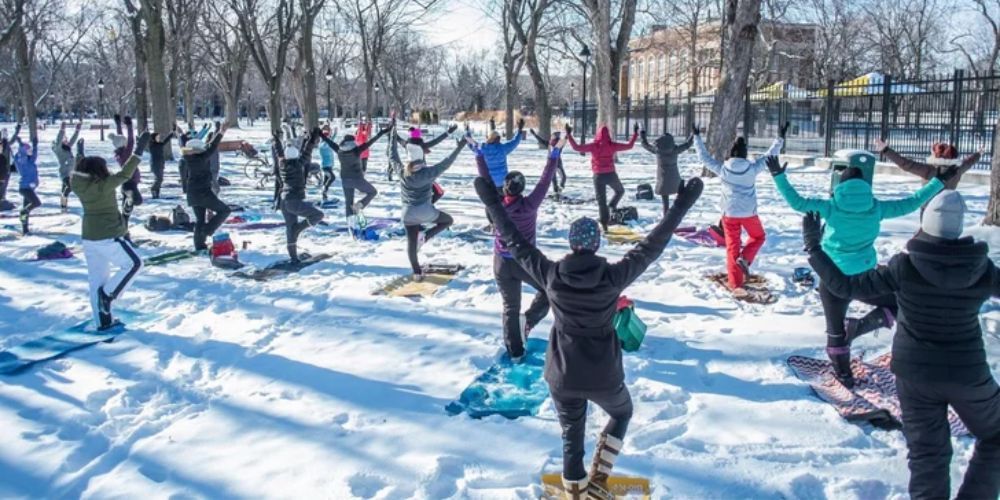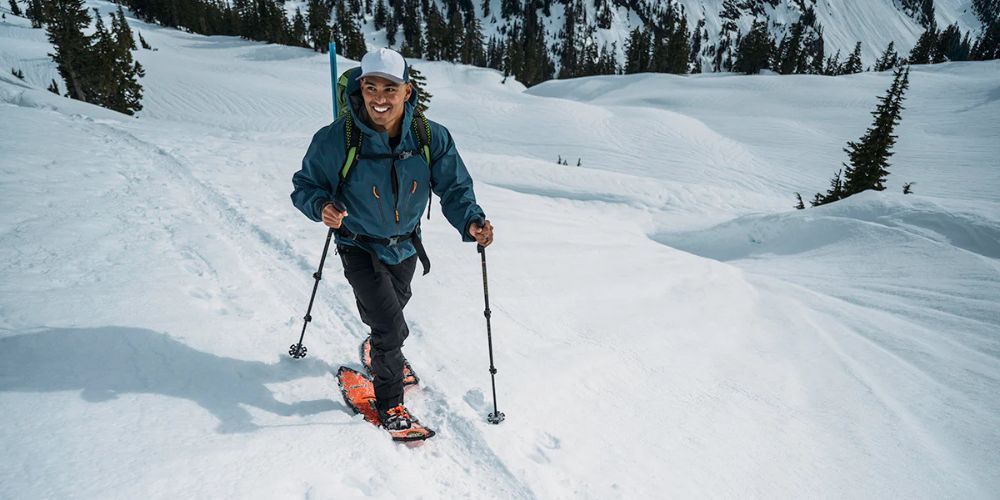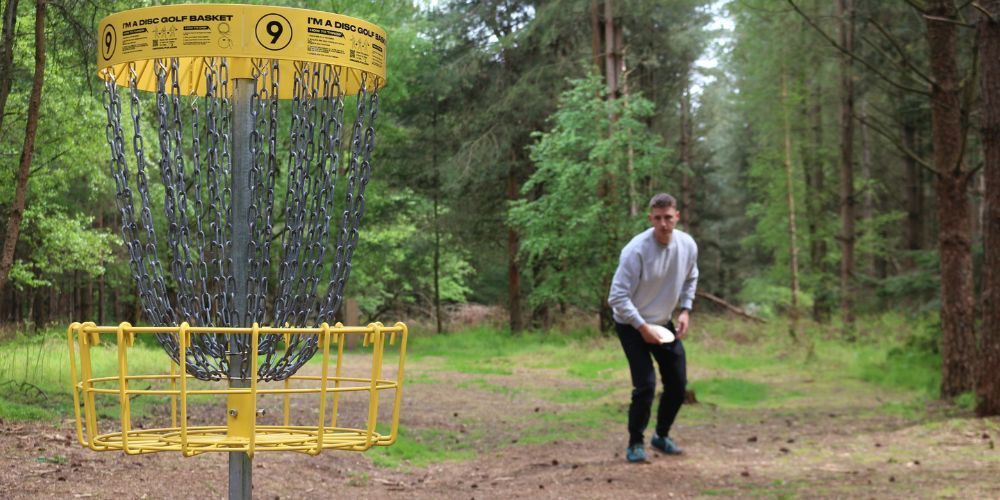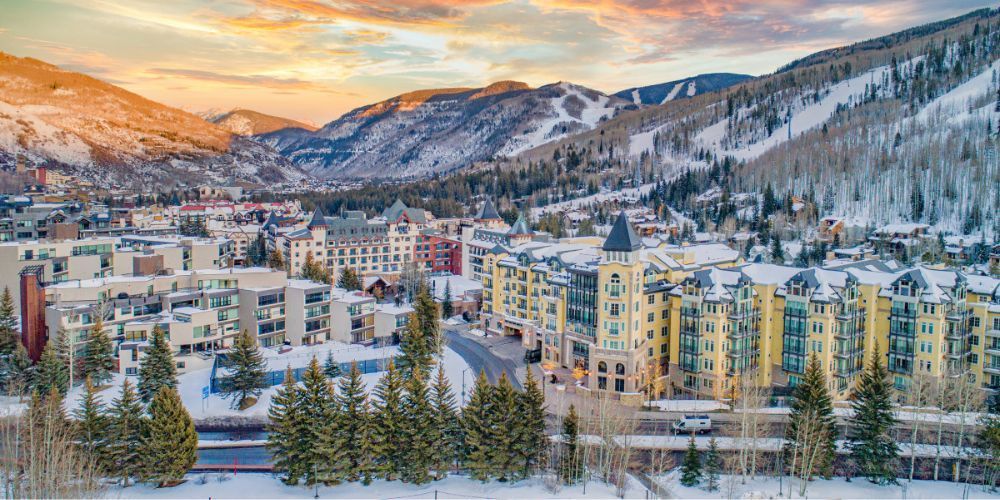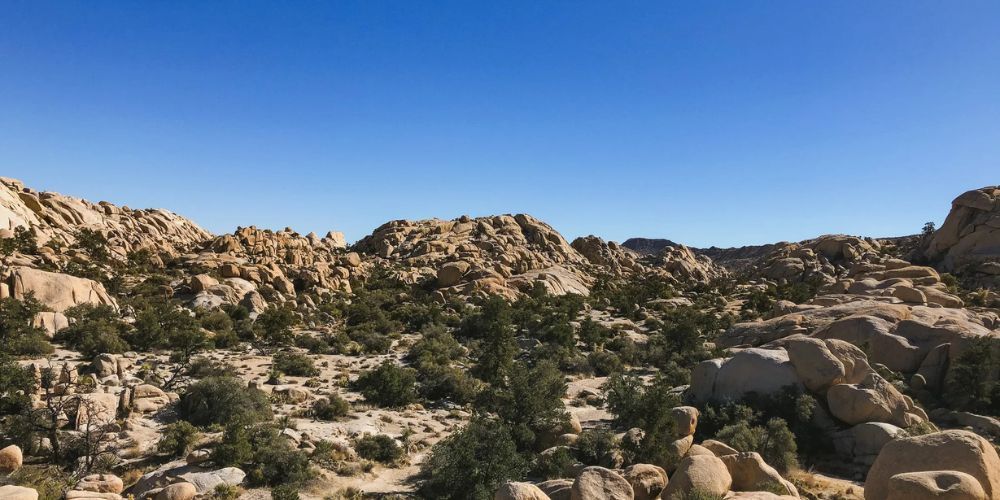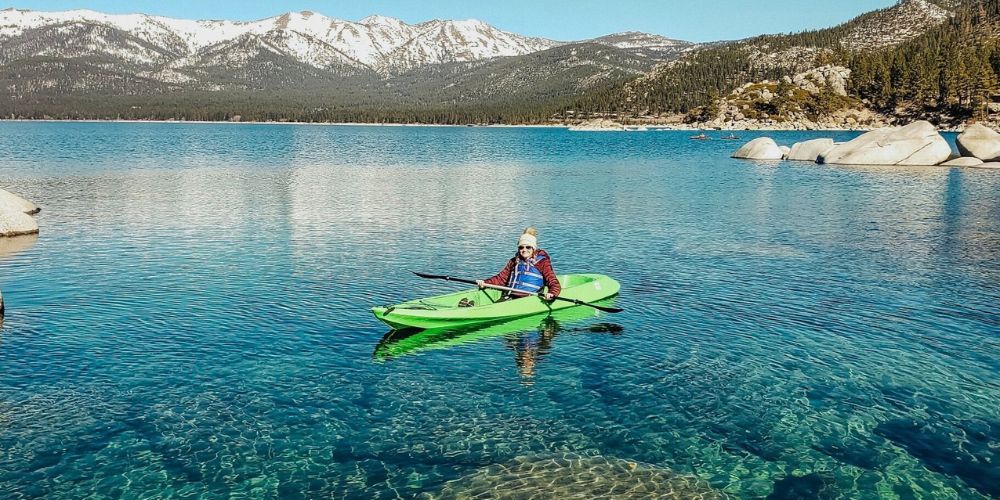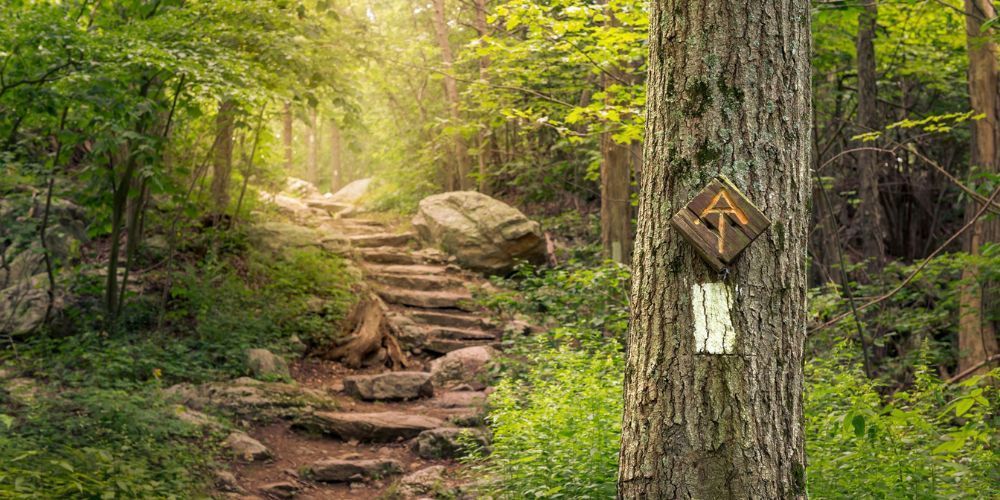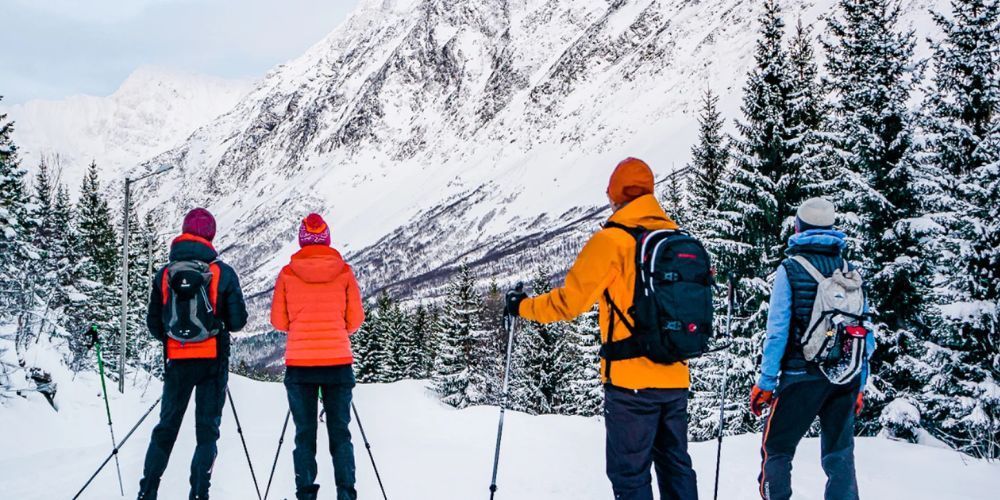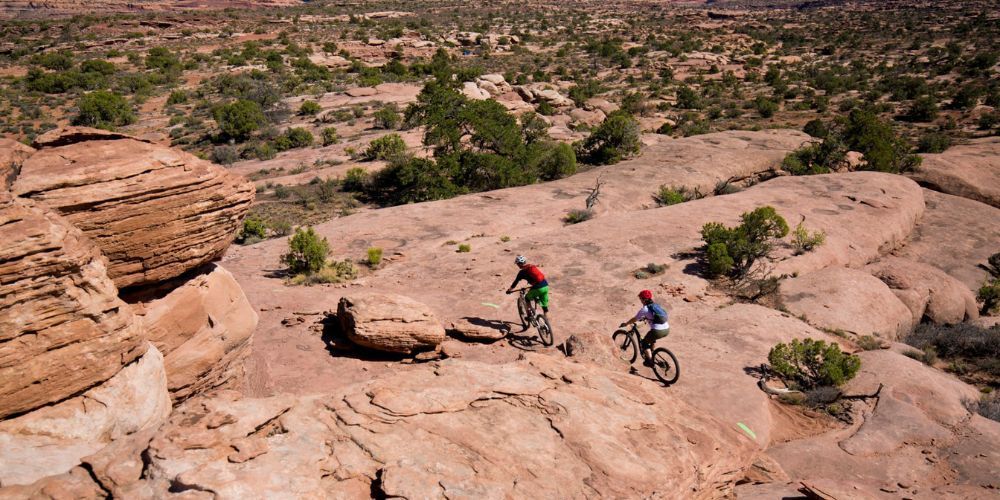Packing Guide for Your Weekend Camping Trip: Essential Gear Checklist
September 8, 2024
Packing for a weekend camping trip comes with its own set of challenges—mainly striking the perfect balance between bringing everything you need and keeping your load manageable. We've all heard stories or experienced firsthand the frustration of reaching camp only to discover we left our headlamp or water purifier behind.
But the good news is this: it doesn't have to be an overwhelming task. By focusing on key essential items such as a reliable tent for shelter and a versatile CamelBak hydration pack for both storage and hydration needs, you can streamline your preparation. Our comprehensive gear checklist ensures that your rucksack covers all bases, from safety and first aid essentials to food and cooking gear—all carefully gathered from extensive research and expert advice. This guide will help you confidently pack your bag and dive into nature without second-guessing if you've forgotten something vital.
When preparing for a weekend camping trip, essential items to pack include a sturdy tent, sleeping bag suitable for the expected temperatures, appropriate clothing layers, cooking utensils, and food. Additionally, don't forget to bring hygiene items like biodegradable soap, a first aid kit, and any personal comfort items such as chairs or pillows to ensure an enjoyable outdoor experience.
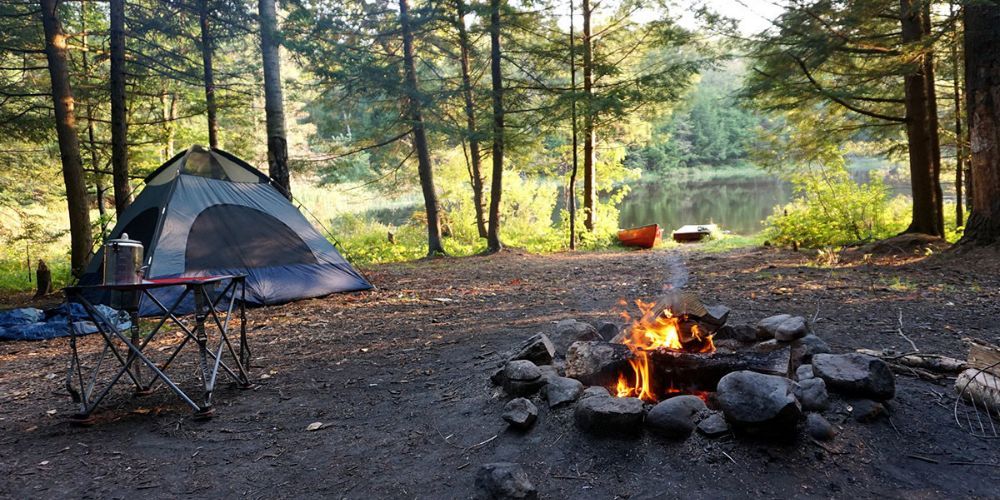
Rucksack Essentials
Packing for a weekend camping trip begins with the essentials, focusing on functionality and comfort. These items significantly impact your safety and enjoyment during your time outdoors. To navigate the wilderness effectively, it's critical to start with three main categories: shelter and sleep, safety and first aid, and hydration and navigation.
Shelter and Sleep
Your shelter acts as your sanctuary in the wild, so having a reliable tent is pivotal.
Opt for a tent that suits both your group size and the prevailing weather conditions; for example, a two or three-person tent provides adequate space while remaining lightweight for easy carrying. It's also wise to include a footprint—this protective layer goes underneath your tent to guard against moisture and abrasions from rough ground.
As for sleep, ensuring a comfortable night is key to recharging your energy for outdoor adventures. Choose a sleeping bag rated appropriately for the temperature you expect to encounter; a sleeping bag that’s too light can lead to chilly nights. Additionally, invest in a sleeping pad or inflatable mattress; being off the cold ground not only adds comfort but helps insulate you from the cool earth.
Safety and First Aid
Safety should always be top of mind when venturing into nature. Packing a basic first aid kit is essential. This doesn't have to be elaborate—it should include bandages, antiseptic wipes, pain relievers, and any personal medications. A multi-tool or Swiss Army knife serves multiple purposes; from preparing meals to performing minor repairs, it's invaluable in the field.
Moreover, knowing where you are and how to get back is part of staying safe. A trusted compass and map shouldn't be neglected—don't rely solely on electronics, as battery life could become an issue in remote areas. Having these tools handy bolsters your confidence when exploring.
Hydration and Navigation
Staying hydrated is non-negotiable! Pack a reusable water bottle or consider a hydration system that allows you to sip water easily while hiking. Remember to carry purification tablets or a filter system; clean water isn’t always guaranteed out there, and these items will ensure you're prepared.
In terms of low-light navigation, don't forget headlamps or flashlights with extra batteries; these illuminate dark paths effortlessly at night or when packing up camp in the morning fog. Finally, having a GPS device or smartphone equipped with offline maps ensures you'll never lose direction—even if connectivity isn't available.
Each of these essentials plays a vital role in providing not just comfort but peace of mind during your camping weekend.
With these packing fundamentals secured in your rucksack, you’ll be ready to tackle outdoor challenges, especially when it comes time to plan meals and tackle the gear needed for cooking.
Food and Cooking Gear
When it comes to food while camping, you want to strike the right balance between convenience and nutrition. A portable stove is your first pillar; it enables you to prepare hot meals with ease, from breakfast eggs to pasta dinners. Combine it with lightweight pots and pans that won’t weigh down your backpack—they’re practical and efficient for cooking, especially when brands like Jetboil offer compact stoves designed specifically for camping.
Don’t forget the essentials: a sturdy mess kit for serving food and utensils for eating. With these basics, you're equipped to whip up something delightful no matter where you are.
As for cooking supplies, matches or a reliable lighter are crucial because nothing can set the tone quite like a campfire dinner under the stars. Imagine gathering around the stove, sharing stories as you prepare a meal together. It’s those moments that make camping unforgettable. Think ahead about how many people you’ll be feeding; the more the merrier when it comes to cooking.
Cooking Equipment
Before heading out, double-check that you've got all your cooking equipment packed. It can be easy to forget little things; even an extra spatula might come in handy when flipping pancakes or stirring a pot. Having lightweight gear minimizes bulk while maximizing utility—after all, every ounce counts when you’re hiking with your rucksack.
- Portable Stove: A must for heating meals and boiling water.
- Lightweight Pots and Pans: Choose non-stick options for easier cleaning.
- Cooking Utensils: Forks, spoons, spatulas; consider collapsible tools.
- Mess Kit: Plates and bowls made from durable materials are ideal for minimizing waste.
- Matches/Lighter: Waterproof matches can be a lifesaver in tricky weather.
Bringing versatile cookware can enhance your culinary experience on the trip. For example, a multi-cooker can save space while allowing various meal preparation methods.
Food Items
Next comes food items—this is where creativity can shine! Pre-packed meals like freeze-dried options from Mountain House are excellent for their long shelf life and ease of preparation; simply add hot water. Snacks should not be underestimated either—trail mix and jerky provide quick energy boosts without fussing over cooking. If you want freshness, opt for simple ingredients such as eggs or chopped veggies that can be stored in resealable bags to maintain freshness without weighty containers.
| Item | Quantity | Purpose |
|---|---|---|
| Jetboil Stove | 1 | Cooking meals |
| Freeze-dried Meals | 6 | Easy to prepare, high nutrition |
| Trail Mix | 3 packs | Quick energy boost |
| Coffee Sachets | 4 | Morning beverage |
| Reusable Water Bottle | 2 | Hydration |
With food sorted into accessible categories and equipment ready for action, you'll find preparing your gear becomes significantly smoother. This attention to organization will lay a solid foundation as we explore the best methods for packing everything efficiently.
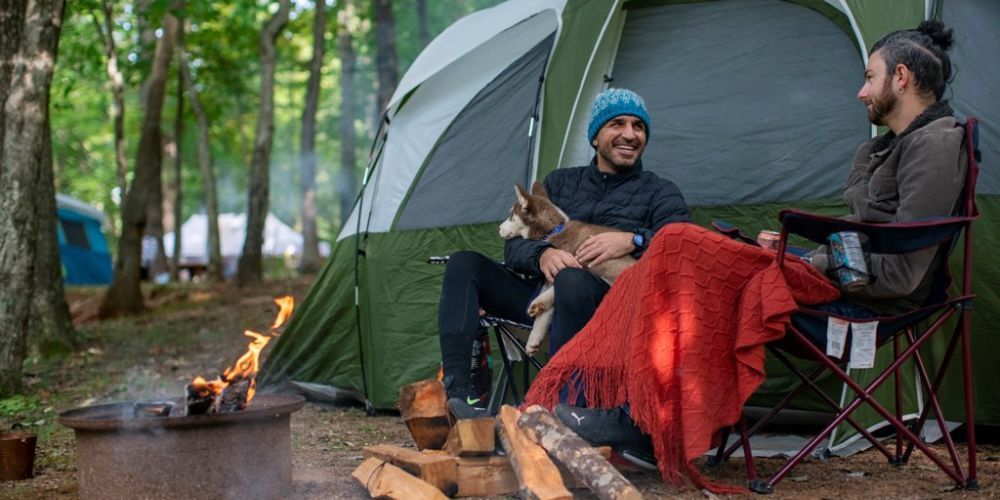
Organizing Your Backpack
Efficient packing not only saves space but also plays a pivotal role in ensuring that you can quickly access essential items while you're out in the wilderness. Imagine hiking up a rugged trail with clouds rolling in; your newly organized backpack allows you to find that emergency poncho or snack bar without fumbling through piles of gear. The foundation of this organizational system is built on compartmentalization and strategic placement of items.
Step I - Compartmentalization
Start by categorizing your items with the help of packing cubes or stuff sacks. For instance, designate one cube for your cooking gear, another for clothing, and perhaps a small one for toiletries. This method saves space and simplifies locating items when needed. Searching through a single cube for a spatula is far easier than rummaging through an entire bag of assorted gear.
Think of it like tidying up a messy desk: once everything is neatly arranged in its own space, you’ll save time and reduce frustration—crucial factors when enjoying time outdoors.
After you've compartmentalized your gear, it’s equally important to consider how to distribute weight effectively within your backpack to maintain balance during hikes.
Step II - Weight Distribution
Proper weight distribution is essential to carrying your load comfortably. Place heavier items such as food and water near the center of your back—this keeps the weight balanced and helps avoid strain on your shoulders. In contrast, lighter items should be positioned toward the top or outer edges of your pack.
Supplementary Tip: As you embark on longer hikes, take a moment to adjust your pack throughout the trip, especially after breaks. Shifts in weight can happen simply from consuming snacks or using other supplies, so keeping everything evenly distributed will enhance comfort as you progress.
Remember to frequently check the straps as well; they can loosen over time, which may alter weight distribution and lead to discomfort.
Once you've packed everything securely and balanced effectively, it's time to focus on preparing for the thrilling experiences that await you in nature.
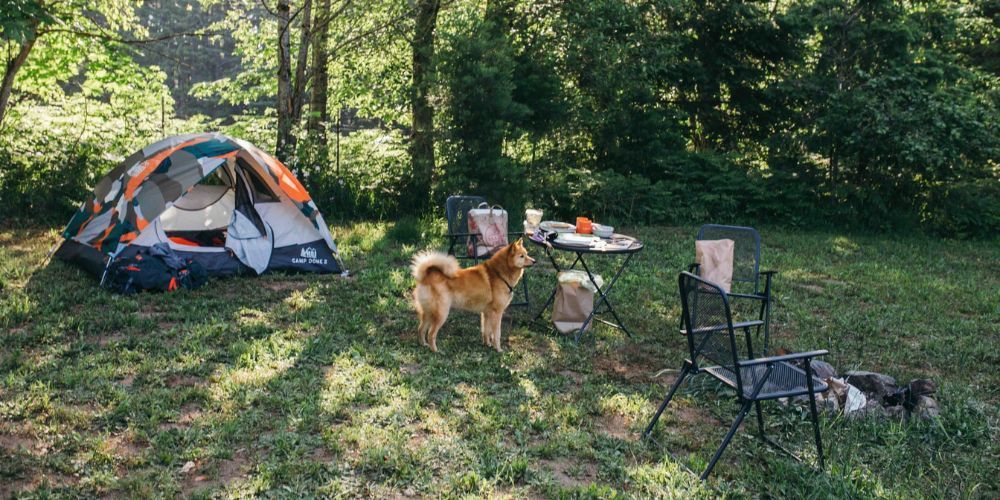
Activities and Adventure Prep
Planning for your camping activities is crucial—it not only keeps boredom at bay but also maximizes your enjoyment of nature's beauty. Consider all potential activities you might engage in, from hiking breathtaking trails to casting a line in a tranquil lake. Arriving prepared can make these excursions both safe and fulfilling.
Hiking Gear
When it comes to hitting the trails, quality gear is essential. It’s not just about having fun; it’s about comfort and safety. Start with sturdy boots, preferably waterproof, which will protect your feet from wet terrain and provide ankle support on rugged paths.
Trekking poles can greatly enhance balance and reduce fatigue, especially on long hikes—something I learned after struggling through steep descents without them!
A daypack is another must-have. It should hold your water, snacks, and other essentials comfortably without weighing you down. Remember to choose a daypack that fits you well and doesn't bounce around while you walk.
Besides hiking, what other adventures await you? Imagine casting your line into a sparkling reservoir or capturing beautiful vistas through a camera lens.
Other Adventure Gear
If fishing is on your agenda, don’t forget to pack your fishing rod and necessary tackle; just make sure that fishing is permitted in the area where you're camping. A skipped fishing trip due to lack of gear can turn into a missed opportunity for relaxation by the water.
Similarly, taking along a camera, especially one housed in a waterproof bag, allows you to immortalize unforgettable moments surrounded by nature. Birdwatching can elevate any camping experience, so consider packing binoculars as well; they’ll help you appreciate those fleeting glimpses of vibrant wildlife.
Drawing from my experiences, I recall lugging heavy camera equipment on one memorable trip. Though it was cumbersome at times, the stunning landscapes I captured made all the effort worthwhile.
Finally, don't underestimate the power of downtime. Bringing items for simple pleasures like journaling or reading can enrich your experience during quieter moments by the fire. Preparing for enjoyable activities ensures every moment of your trip is spent embracing nature, leaving no room for boredom to creep in.
With our gear selected and activities mapped out, the next step is ensuring we have everything needed to navigate whatever weather conditions may arise.
Essential Weather-Proofing Gear
When heading out into the great outdoors, it’s crucial to have the right gear that will keep you dry, warm, and protected—no matter what Mother Nature throws your way. First and foremost is your clothing; this category forms the first line of defense against harsh elements. A good waterproof jacket and pants are absolutely essential; they not only repel rain but also block chilly winds that can make a pleasant hike feel miserable in an instant.
For those cooler nights or unexpected drops in temperature, layering is key. Packing insulating layers like fleece or thermal wear ensures you can comfortably adapt to changing temperatures throughout the day.
But it doesn’t stop at just staying warm; keeping your extremities cozy is equally important.
Clothing
Extra socks and gloves are a must-have in any camping bag. Wet socks can ruin your mood faster than anything else, so be sure to opt for moisture-wicking fabrics that help keep your feet dry. A wide-brimmed hat serves dual purposes; it shields your face from the sun while offering some light rain protection as well. Having these versatile clothing options means you can embrace whatever adventures await you with confidence.
Now, let's think about how your shelter plays a crucial role in keeping you protected from the elements.
Shelter Enhancements
In addition to dressing appropriately, enhancing your campsite with the right gear is vital for weather-proofing. Start by using a tarp or groundsheet beneath your tent; this creates an extra layer of protection from dampness which can seep into your sleeping area during rainy conditions. If your tent doesn’t come with one, consider investing in a rainfly. This additional cover helps ensure that water doesn’t pool on top of your tent, preventing leaks.
Another smart piece of gear is a waterproof pack cover for your rucksack. This is invaluable for safeguarding your belongings when sudden showers occur, providing peace of mind whether you're hiking or just lounging at the campsite.
Finally, let’s address footwear because when camping, your feet take on a lot. A good pair of waterproof boots protects you from wet grass and puddles while providing stability and support on rocky terrain. Think of brands like Merrell; their Moab 2 boots are often noted for durability and comfort on long treks.
Having equipped yourself with essential weather-proofing gear will set you up for success outdoors. Next, it's time to prepare a thorough review of everything you'll need before embarking on your journey.
Departure Checklist
A final departure checklist can make the difference between a serene camping trip and a chaotic scramble. Imagine the peace of mind that comes when you know you've covered all your bases before heading into nature. It's those little things that often slip our minds in the excitement of packing up for the weekend—that's why I always recommend creating a system. It helps you ensure nothing essential is left behind, giving you more time to enjoy the open skies ahead.
"Preparation is key," my friend once said after forgetting his beloved camp stove on a trip. The experience was a reminder for all of us about the importance of double-checking our gear. This simple ritual can prevent unnecessary setbacks and allow for smoother transitions from camp to campsite or trail.
Essential Items to Confirm
Starting with the basics: tent stakes and poles should be in tow; there's nothing worse than arriving at your site only to find out that you're missing key components for shelter.
Next, verify that your food supplies are packed—don't forget those trail snacks that will keep energy levels up during hikes. Having too little food can turn an adventure into an endurance test, so ensure everything from meals to quick bites is tucked away safely.
The first aid kit is equally critical. Check not only that it’s present but also ensure it contains essentials such as band-aids, antiseptic wipes, and any personal medications. Remembering this can mean the difference between a fun hike and an unfortunate injury with inadequate care available nearby.
Checking batteries for electronic devices is another great tip. Whether it’s flashlights, GPS devices, or portable chargers, fresh batteries ensure you have reliable tools when you need them most. After all, losing power while trying to navigate unfamiliar terrain isn’t just inconvenient; it can be unsafe.
Important Documents
Lastly, make sure proper identification and permits are included in your pack. You’ll often need these for camping in protected areas or national parks. Storing them safely—perhaps in a waterproof bag within your main pack—can save a lot of headaches down the road.
Many seasoned campers advocate for reviewing this list the night before departure instead of trying to remember everything last minute. Preparing ahead allows time to rest before embarking on your journey and reduces trip-related stress, making your venture into the wild enjoyable from beginning to end.
By methodically checking off each item from your checklist, you're paving the way for both a seamless adventure and unforgettable moments under the stars.
Ultimate Weekend Packing List
When it comes to packing for a camping trip, having a well-thought-out list can ease the stress of organization and leave room for excitement. Picture this: you arrive at the campsite, the sun is setting, and instead of rummaging through your bags looking for gear, everything you need is right at your fingertips. That’s the beauty of an ultimate packing list.
Essential Gear
At the heart of your adventure lies your shelter. Start by including a robust tent along with its footprint and rainfly to protect against unexpected weather changes. Think of the tent as your home away from home; it should provide safety and comfort. A sleeping bag designed for the season ensures warmth during chilly nights, while a sleeping pad insulates you from the cold ground underneath. The combination of these elements fosters a feeling of coziness that's vital after a long day outdoors.
Next up, consider your cooking essentials. A portable stove is crucial for whipping up meals at your campsite, but don’t forget cooking gear like utensils and pots that suit your meal plans. Just imagine savoring a hot meal under the stars! Pack a few reusable water bottles along with a purification system; hydration is key when you're enjoying nature's bounty.
Safety and Navigation
Now let’s talk about safety. Every camper should carry a multipurpose tool and a first aid kit—think of it as packing peace of mind. Just like carrying an umbrella doesn't always mean it'll rain, having these items guarantees that you are prepared for minor emergencies.
Whether you're planning on hiking into the wild or simply setting up camp, navigation tools such as a compass, map, or GPS device are essential. They keep you oriented and can add to the adventure by inviting exploration.
Personal Comfort
Clothing choices can make or break your camping experience. Opt for clothing layers that allow you to adjust to changing temperatures easily. Waterproof jackets are lifesavers if rain catches you off guard, rendering camping less enjoyable without proper attire.
Just For Fun
Lastly, don’t forget to bring along activity-specific gear tailored to your interests—be it cameras for capturing memories or fishing rods for those who enjoy catching dinner fresh from the lake. Imagine reeling in that perfect fish while surrounded by friends and laughter!
Ultimately, with every layer added to this list and every nugget of wisdom gathered from personal experience, you’re shaping an unforgettable camping trip filled with adventure and relaxation.
With this ultimate packing list close at hand, you’re well-equipped to embrace the great outdoors and create lasting memories around the campfire. An organized approach can transform any weekend outing into an extraordinary experience brimming with adventure and shared joy.
What should I pack for a weekend camping trip?
When packing for a weekend camping trip, it’s essential to cover the basics: shelter, sleep, food, and safety. Start with a sturdy tent, a sleeping bag suited to the weather, and a sleeping pad for comfort. Bring enough food for the entire weekend, plus a portable stove or grill for cooking. Don’t forget essentials like a first-aid kit, water bottles or a filtration system, insect repellent, and a flashlight or headlamp. Also, consider packing layers of clothing, rain gear, and comfortable hiking boots to stay prepared for any weather.
How do I choose the right camping gear for a weekend trip?
Choosing the right gear depends on your camping location and personal preferences. If you’re camping in an established campground, you may not need to bring as much gear as you would for backcountry camping. Lightweight, compact gear is best for those hiking to their campsite, while car campers can afford to bring bulkier items. Prioritize high-quality equipment like durable tents, reliable sleeping bags, and sturdy cooking tools. Make sure your gear is weather-appropriate for the area you’re visiting and test everything out beforehand to avoid surprises.
What food should I bring for a weekend camping trip?
Plan your meals based on how much space and cooking resources you have. For easy prep and minimal clean-up, prepackaged or dehydrated meals can be great options. You can also bring non-perishable items like canned foods, nuts, jerky, and dried fruits. If you plan to cook, make sure to pack a portable stove or grill, cookware, and utensils. Don’t forget snacks like trail mix, energy bars, and fruits for quick energy on hikes or around camp. Be sure to store your food properly to avoid attracting wildlife.
Check out the latest guides on camping gear
Author: William Flaiz
All Rights Reserved | Sports and Nature Gear

